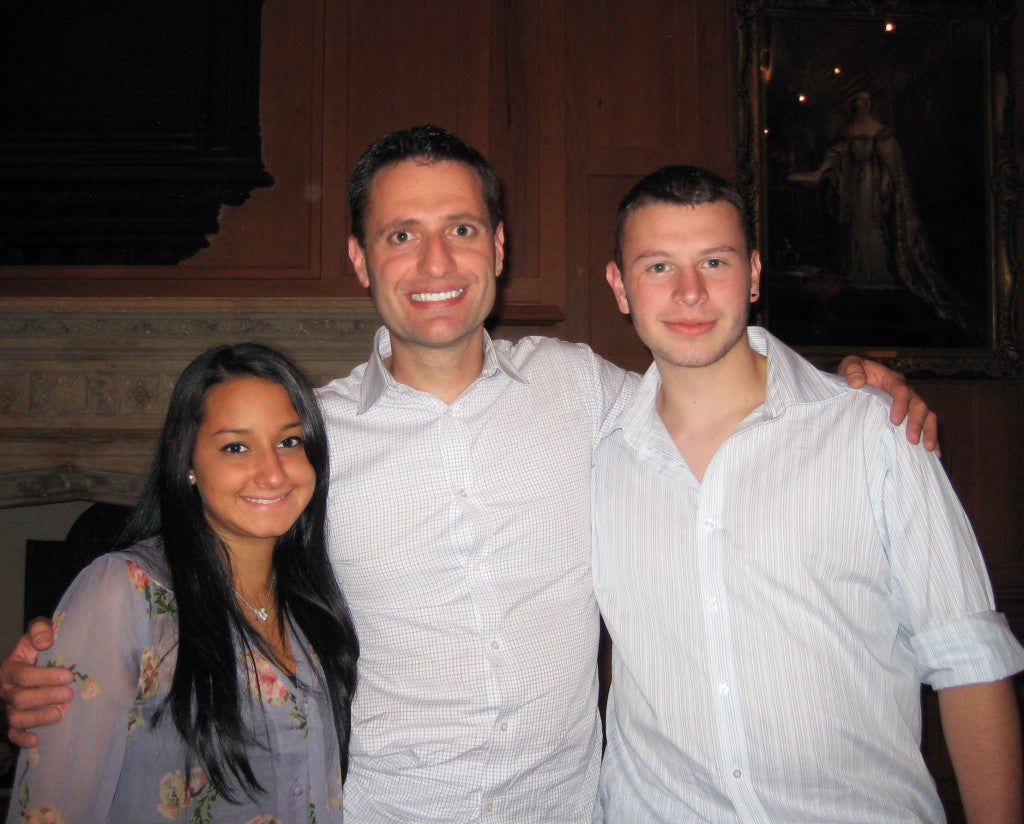HLS clinic helps teens who have been victimized by acts of violence
Mark Hutchinson’s father lost the use of his legs in a bombing in Northern Ireland. Caitlin Leavey was 10 years old when her father, a New York City fire lieutenant, died leading firefighters from Ladder 15 into the south tower of the World Trade Center on Sept. 11, 2001. For these teens and 73 others from around the globe with family members killed or seriously injured in acts of violence, this past summer offered a valuable experience: a weeklong program in Belfast, Northern Ireland, called Project Common Bond, where they learned new skills for communication and conflict resolution under the guidance of the Harvard Negotiation and Mediation Clinical Program.
The curriculum for the program was developed last spring by two students in the clinic, Elaine Lin ’10 and Annie Levin ’10. Immediately after taking the bar exam in July, Lin and Levin flew to Belfast to teach the program along with Robert C. Bordone ’97, clinic director and clinical professor of law; Toby Berkman ’10, an associate at the clinic; and HLS Negotiation Workshop Lecturer Florrie Darwin ’84.
Project Common Bond is sponsored by Tuesday’s Children, a New York-based organization that provides a wide range of services to people directly affected by the events of 9/11. It’s hosted camps twice before, but this was the first to be held outside the U.S. and to bring together children from nations in conflict. The Belfast campers, ages 15 to 20, came from the U.S., Spain (including the Basque country), Israel, the West Bank and Gaza, Northern Ireland, Ireland and Argentina. Through group activities led by the Harvard team, designed to foster trust, cooperation and communication, the teens worked on listening to and empathizing with people from very different cultures—including those with whom they may be in direct conflict.

“The curriculum helped the students with perspective-taking, how to talk about things not as ‘the truth’ but as how they see them, and also helped them identify and deal with emotions. These skills are central to helping individuals understand and deal with conflict more effectively,” said Bordone. “I think the campers left with a better set of tools and a sense that the other side, too, has a story to tell.”
Hutchinson, 16, who lives in Belfast and cares for his father, said, “I learned a number of things from the program, such as that I am not the only person out in the world [whose] family has been affected in times of trouble, such as the Troubles in Northern Ireland.”
“I learned how effective nonverbal communication is, and how little it meant that we all didn’t speak English,” said Leavey, 19, who is studying Peace and Conflict Studies at NYU and plans to work with children who have been affected by violence. The program also taught her “how to be an active listener and how we can respond—and teach others how to respond—to conflict.”
Bordone said the Belfast project was equally valuable for his clinical students: “It was real-world, connecting theory to practice in a way [that] can make a real difference.”
Lin agreed, calling the project “the capstone” of her Harvard experience and “the initiation into life after law school.” She is working in Australia for the next year at a conflict management firm and teaching negotiation at Monash University Law School in Melbourne.
Bordone added that the week gave students a chance to see real change, particularly in those campers who live in conflict zones.
“While it’s gratifying to see Irish Catholics and Protestants become friends during the course of the week,” he said, “it’s even more meaningful to hear them talk about how they might share what they learned with others when they return to their segregated home communities. This kind of connection can make a difference, particularly in a moment of disruption and violence.”
Conflict resolution by design
Students in the Harvard Negotiation and Mediation Clinical Program represent clients throughout the U.S. and the world and help them design better ways to resolve their differences. For example, in recent semesters, students in the clinic have evaluated the dispute resolution processes at the National Institutes of Health, helped the Cleveland Indians organization improve its success in player acquisition negotiations and created specialized training programs for environmental lawyers in China in collaboration with the Natural Resources Defense Council. It is the first law school clinic in the nation to focus on conflict assessment and designing systems to resolve disputes.
